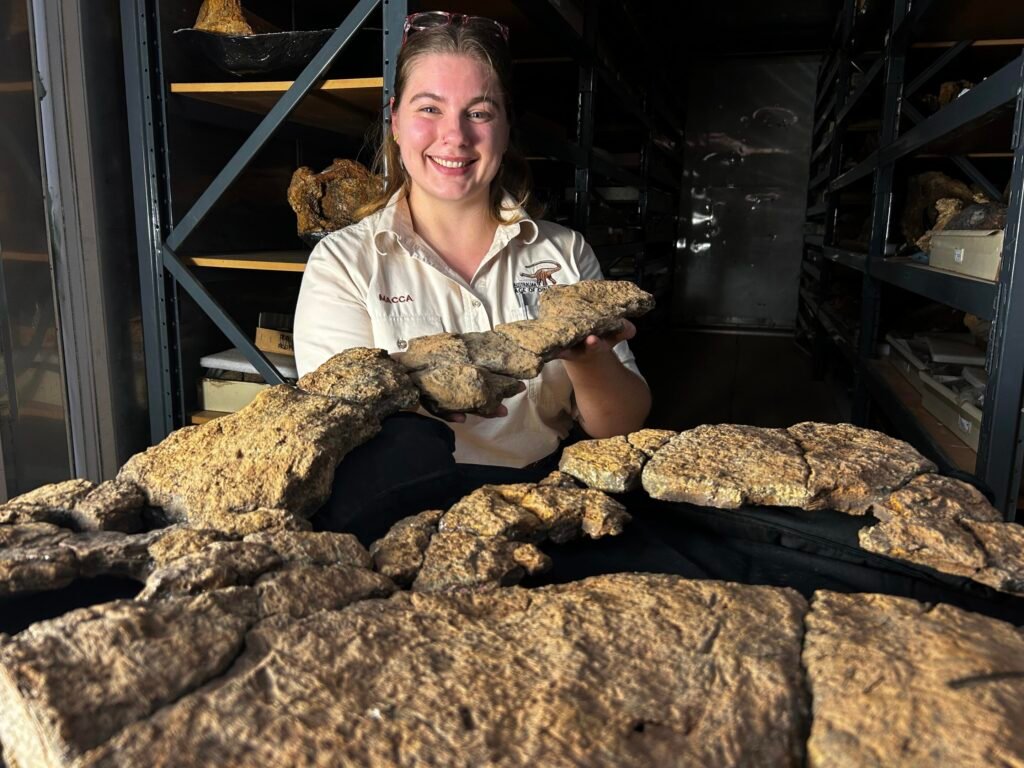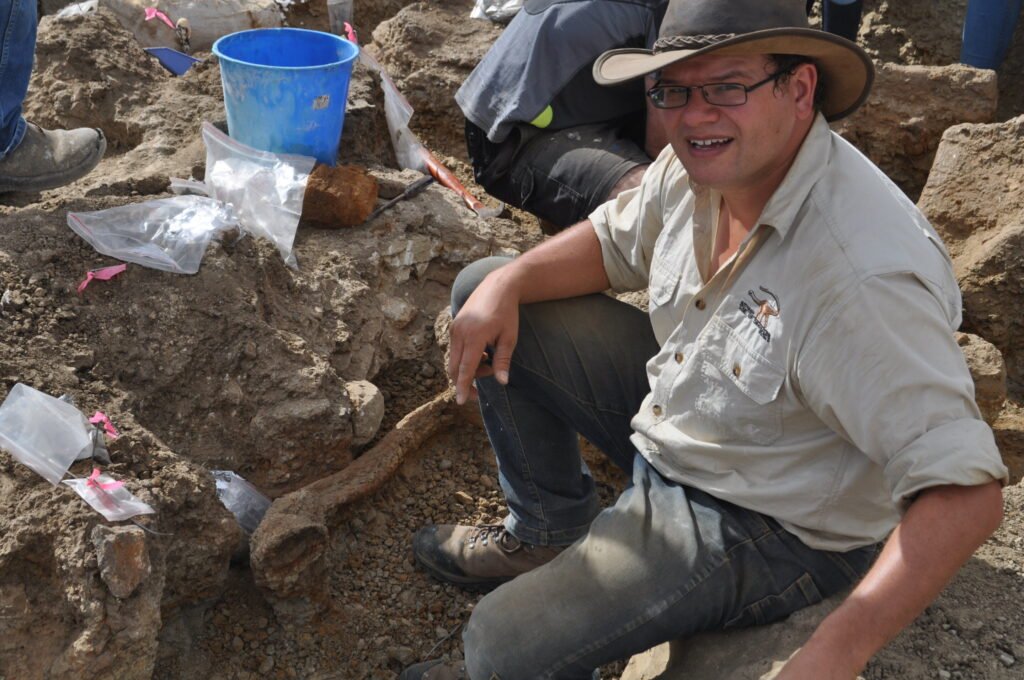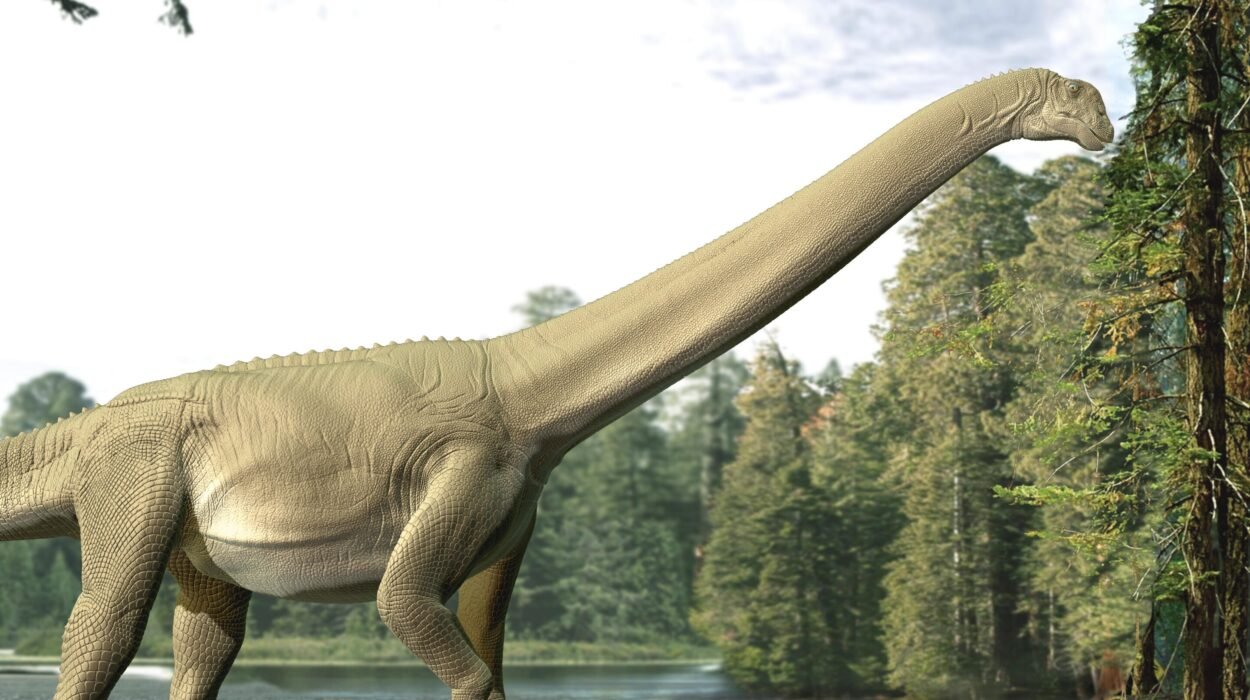In the blazing heat of an Australian summer in 2017, paleontologists were scraping away ancient rock in the Winton Formation of Queensland when they stumbled upon something that would electrify dinosaur science: a fractured layer of stone that, at first glance, looked like little more than jumbled debris. But locked inside this rock lay a time capsule—a glimpse into the literal last meal of one of Earth’s mightiest giants.

It belonged to Diamantinasaurus matildae, a long-necked, lumbering sauropod that roamed the lush landscapes of what is now Australia roughly 94 to 101 million years ago. And inside its fossilized belly were plant remains so exquisitely preserved that they are rewriting what scientists know about how these colossal creatures lived, ate, and shaped entire ecosystems.
“No genuine sauropod gut contents had ever been found anywhere before,” says Stephen Poropat of Curtin University, lead author of the new study published in Current Biology. “Despite sauropods being known from fossils on every continent and spanning at least 130 million years, we’d never had direct proof of what they actually ate. This changes that.”
For generations, paleontologists have pieced together sauropod diets like detectives at a crime scene, sifting clues from tooth shapes, jaw hinges, and the wear patterns on enamel. They could speculate that these animals were herbivores, bulk-feeding on a wide variety of plants. But speculation, however educated, is never quite the same as hard evidence.
Now, that evidence has arrived. The fossilized gut contents—known as a cololite—contained a mosaic of plant fragments: the delicate whorls of conifer needles, seed-fern fruiting bodies, and tiny leaves from angiosperms, the earliest flowering plants. For the first time, scientists can point to real food that passed through the gut of a sauropod, proving that these giants were indeed herbivores—and revealing surprising details about their diets.
Poropat still marvels at the sheer serendipity of the find. “We were excavating the skeleton and noticed this unusual, fractured rock layer,” he recalls. “When we realized what we had, it was extraordinary. It’s like discovering the last chapter in a dinosaur’s personal diary.”
The find confirms that Diamantinasaurus and its kin were not delicate nibblers but indiscriminate bulk feeders. “The plants within show evidence of having been severed, possibly bitten, but have not been chewed,” says Poropat. Sauropods, it seems, swallowed their meals in huge gulps, relying on vast fermentation chambers in their bellies—and legions of gut microbes—to break down tough plant fibers.
Chemical biomarkers extracted from the cololite revealed signatures of both gymnosperms, such as conifers, and angiosperms—the flowering plants that were only beginning to flourish during the Cretaceous. That discovery, says Poropat, was unexpected.
“Angiosperms became approximately as diverse as conifers in Australia around 100 to 95 million years ago, when this sauropod was alive,” he explains. “This suggests that sauropods had successfully adapted to eat flowering plants within about 40 million years of their first appearance.”

It’s a fascinating twist in the evolutionary saga of both dinosaurs and plants. Flowering plants were newcomers in the mid-Cretaceous, rapidly spreading across the world and transforming ancient landscapes. Now, scientists know that at least some sauropods had already added them to their menus, evolving alongside the botanical newcomers in a vast, intertwined dance of ecological change.
While the cololite provides an unprecedented snapshot of Diamantinasaurus’ last meals, the researchers urge caution in extrapolating too far. “The primary limitation is that the gut contents we describe constitute a single data point,” Poropat says. “We don’t know if the plants preserved in our sauropod represent its typical diet, or the diet of a stressed animal. We also don’t know how indicative the plants in the gut contents are of juvenile or adult sauropods, since ours is a subadult.”
But even one data point can be transformative. For the first time, scientists have proof that sauropods consumed a broad mix of plants, from towering conifers to tender shoots of flowering species. And the physical state of the plant fragments hints at a lifestyle of grabbing and swallowing, rather than chewing—a behavior that might have allowed these giants to ingest vast quantities of vegetation quickly, fueling bodies that sometimes weighed more than a dozen elephants.
It’s also a tantalizing clue about how sauropods interacted with their environments. As the dominant herbivores in many ancient ecosystems, they must have had an enormous impact on plant communities, clearing vegetation, dispersing seeds, and perhaps even driving the evolution of certain plant defenses.
In the silent stone belly of Diamantinasaurus, we glimpse a world alive with color, texture, and scent: fern fronds unfurling under prehistoric suns, pine-like conifers swaying in warm breezes, and delicate flowering plants daring to spread across the land. It’s a reminder that even the mightiest giants were deeply tied to the smallest leaves.
And for those who have long imagined sauropods as plodding, towering behemoths nibbling bland greenery, Poropat’s discovery adds thrilling new detail. These animals were voracious bulk feeders, cruising through primeval forests, gathering towering mouthfuls of whatever vegetation lay in reach—from ancient seed ferns to the earliest blossoms of flowering plants.
“It’s astonishing to hold in your hands the remains of what a dinosaur ate,” Poropat reflects. “It connects you across millions of years. For the first time, we can say with certainty: this is what a sauropod’s world tasted like.”
More information: Fossilized gut contents elucidate the feeding habits of sauropod dinosaurs, Current Biology (2025). DOI: 10.1016/j.cub.2025.04.053. www.cell.com/current-biology/f … 0960-9822(25)00550-0
